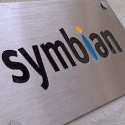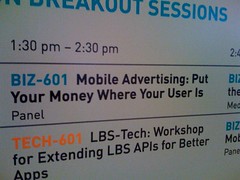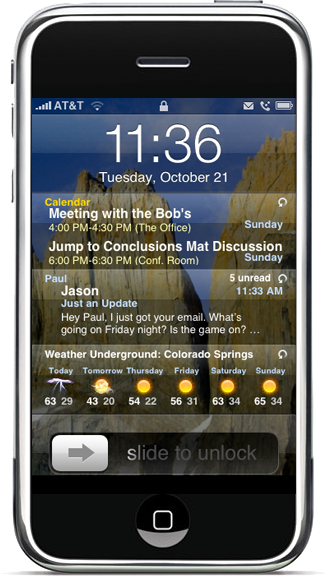Nokia Pushes Symbian OS into the Ring with Google’s Android
 The Financial Times is reporting that Nokia will buy the rest of Symbian and unveiled its plans to make the smartphone OS open source in 2009, under a newly formed Symbian Foundation. Nokia’s move counters the Google-led Open Handset Alliance and its Android platform.
The Financial Times is reporting that Nokia will buy the rest of Symbian and unveiled its plans to make the smartphone OS open source in 2009, under a newly formed Symbian Foundation. Nokia’s move counters the Google-led Open Handset Alliance and its Android platform.
From the article: “The world’s largest handset maker announced it was taking control of Symbian, the UK software company responsible for the most popular operating system on smartphones.
“Nokia will contribute the computer code behind Symbian’s operating system to a new non-profit organisation to be called the Symbian Foundation. The foundation will make the code available for free to software developers, in a move aimed at spurring innovation in the mobile internet.
Add this to digg, del.icio.us, etc.
HTC Touch Diamond: Your Windows Mobile is Showing
In March I posted HTC’s beautiful promotional video of the Touch Diamond UI. Now that the device is commercially available (in the UK for now) we can see the interface design in action. In a fairly in-depth video the mobile bloggers at TracyandMatt.co.uk run the UI through its paces.
The UI belies the Windows Mobile 6.1 OS underneath — it is nowhere apparent in HTC’s official video. But the problem isn’t necessarily Windows Mobile as the HTC UI does a great job at hiding it. The problem is the gaps they left in the Touch Diamond UI that let the Windows Mobile core UI poke through. The result is a disjointed experience as the user bounces between what seems like a solid, gestural and accelerometer-enabled touch experience and back to the basic and ugly Windows Mobile UI. As you can see from the video, there are clearly breakdowns in the experience where the new HTC UI behaves differently from the Windows Mobile underneath.
This is a case study of the fragmentation in the go-to-market (commercialization) process. The device manufacturers, the carriers and the operating systems come from different places with different motivations and business models. The parties involved are never fully able (despite what seems to be a really fantastic effort from HTC) to make that industry fragmentation invisible to users.
The video illustrates some of the noteworthy gaps in the user experience. Play by play after the bump…
Continue Reading »
Add this to digg, del.icio.us, etc.

Adobe CTO Kevin Lynch discusses the Open Screen initiative and explains the reason for the discontinued licensing requirements for using SWFs in the mobile platform. Also of great interest to those reading between the lines, Kevin describes the AIR (Adobe Integrated Runtime) initiatives with the phrase “desktop and devices”. We’ve been left to speculate about “AIR Lite” since none of our contacts at Adobe will spill any details. In essence though though an AIR Lite offering would allow Flash apps to run on mobile devices outside of a browser.
Add this to digg, del.icio.us, etc.
[Ed. note: The new iPhone 3G, at $199 is $40 more than the first-gen iPhone? Christian, you better explain your math.]
When I heard the official announcement about the iPhone 3G, nothing surprised me. Enterprise Apps? Check. GPS? Check. 3G? Check. Then they announced the price. Wow. $199 USD. It sounded too good to be true. For one third the cost one year ago, you can buy a shiny new iPhone with all the latest hardware goodies. Why would anyone not buy an iPhone at this price?
Then some details started to come out that weren’t announced to the frenzied keynote crowd under Jobs’ spell. Who was going to pay for this fabulous price cut? Apple? No, it will be the carriers who are now subsidizing the phone. This was a little disappointing. The iPhone was a step in the right direction — demonstrating that a manufacturer could move away from the innovation-crippling carrier subsidies. Still, the move isn’t too surprising. So will AT&T foot the bill when I buy my new super cheap iPhone? Nope. Later in the day we started to see reports that explain it all. The mandatory data plan for the new iPhones will be $30/month –- $10/month more than the first-gen iPhone. So $10 x 24 months (for the 2 year contract) = $240. So who will pay for the new cheap phone? Surprise! But no surprise. The $200 iPhone is actually $440, a price increase of $40 over first-gen prices.
In AT&T’s defense, it’s likely that iPhone users on 3G will chew up a lot more bandwidth. Still, from a consumer standpoint, buyer beware. The new iPhone is not as cheap as it appears.
And what’s the broader impact of this? Should each of those 70 countries Apple has announced expect the same kind of data-plan subsidy as Apple/AT&T in the US? What will the impact be for the adoption of data-plans abroad? See the related article: US Overtakes UK in Smartphone Mobile Web Usage.
Add this to digg, del.icio.us, etc.

Khoi Vinh, prolific design blogger at Subtraction, created a great info graphic contrasting the reduced resale value of his iPhone (orange) with the rising value of AAPL stock (green). The graphic illustrates the cost of being an early adopter. If you had invested $599 in AAPL stock instead of buying an iPhone you would now have enough to buy the 3G iPhone and have $599 in AAPL assets.
Add this to digg, del.icio.us, etc.
As always, the best live WWDC Jobs’ Keynote coverage seems to come from Engadget. Lots of interesting developments on the iPhone 2.0, the iPhone SDK and the iPhone store and one we hadn’t expected, “MobileMe” cross-platform syncing.
Sega’s announcement of Super Monkey Ball for $9.99 is somewhat surprising. The price is about 2x more than other mobile phone games, but is on par with PMP-based titles. Can the full screen, graphic rich iPhone gaming experience justify that kind of spend like a dedicated gaming device can? Certainly the over-the-air purchasing is a perk most PMPs can’t deliver.
We hoped for a few things for the iPhone and got some right (3G! GPS! 3rd Party Apps!). Turns out we were totally wrong when it came to the camera. (No updates for the camera?)
Add this to digg, del.icio.us, etc.
 At last week’s BREW conference I participated in a panel on mobile advertising (the panel’s title shares the same name as this post). Being primarily a developer conference the other panelists, and the audience to a degree, were largely interested in current and near-term opportunities. The discussion focused heavily on on-deck advertising. Frustratingly so.
At last week’s BREW conference I participated in a panel on mobile advertising (the panel’s title shares the same name as this post). Being primarily a developer conference the other panelists, and the audience to a degree, were largely interested in current and near-term opportunities. The discussion focused heavily on on-deck advertising. Frustratingly so.
The experience highlighted the current reality that as much as things are opening up there is an existing ecosystem that has to find its way. On-deck advertising for on-deck content is where the ad dollars are; simply because it’s also where most of the users are right now. This is not a surprise. What surprised me is the hesitation of discussing what the mobile web is bringing and that being where the users are in the currently emerging future means looking outside the walled garden.
If you’re an ad network, your challenge is not to demonstrate the value of mobile advertising. That’s easy. The CPMs and the CTRs back it up. The challenge is to attract mainstream credibility to mobile advertising by getting well-known brands (via their agencies) on board. This is a catch-22: companies and their agencies still have siloed approaches to mobile advertising and will until it becomes mainstream. Worse than that, even, is that deploying a campaign for the fragmented mobile landscape (carriers, ad networks, devices) is a major burden. Continue Reading »
Add this to digg, del.icio.us, etc.
 It’s fitting that the name of this blog is in reference to this very idea — that users would benefit from at-a-glance information at the idle screen that doesn’t require interaction. The iPhone’s default UI makes no real attempt at putting the idle screen to use.
It’s fitting that the name of this blog is in reference to this very idea — that users would benefit from at-a-glance information at the idle screen that doesn’t require interaction. The iPhone’s default UI makes no real attempt at putting the idle screen to use.
If you’re like me (and I recognize many folks aren’t) you like the idea of having quick summary info at the top level of your iPhone experience. In other words, you’re way too lazy to go through several siloed applications just to find out what the weather is like and when your next meeting is. You want that stuff at a glance. This widget proposes to give you that at-a-glance look from the idle screen of your (jail-broken) iPhone.
Kudos to Intelliscreen for making it happen.
Get Intelliscreen’s iPhone Widget at ModMyiFone
Add this to digg, del.icio.us, etc.
 BREW 2008, SAN DIEGO - Adobe and Qualcomm announced Flash would be fully integrated into the BREW Mobile Platform. The news was the latest in a string of great announcements about the platform that are taking the BREW and the Flash Lite communities by surprise. Last week’s announcement came on the heels of some great developments on the Flash front with Sony Ericsson announcing all its future handsets will be Flash enabled and with Adobe’s announcement that licensing the Flash player will be free (meaning other handset makers are likely to follow).
BREW 2008, SAN DIEGO - Adobe and Qualcomm announced Flash would be fully integrated into the BREW Mobile Platform. The news was the latest in a string of great announcements about the platform that are taking the BREW and the Flash Lite communities by surprise. Last week’s announcement came on the heels of some great developments on the Flash front with Sony Ericsson announcing all its future handsets will be Flash enabled and with Adobe’s announcement that licensing the Flash player will be free (meaning other handset makers are likely to follow).
Qualcomm and Adobe are partnering to create, or rather revamp, Qualcomm’s BREW Mobile Platform. For an Adobe perspective Read Bill Perry’s overview on his FlashDevices blog. Technically, BREW already was a mobile platform to begin with, but in the wake of the iPhone and possible Android disruptions, it’s not surprising this has been in the works. These companies are looking for partners to create platforms and alliances to ensure their competitive edge. Could this mean that we will see AIR mobile (Adobe Integrated Runtime) soon? And if so, will it cooperate with this new BREW Mobile Platform?
The Adobe Flash Lite player has been available as a BREW application (BREW engineers call it an extension) for almost 2 years — but in its current state, it allows Flash Lite applications to run only as siloed downloads (for games, screen savers, visual ringtones, etc.). There was no good way to use Flash Lite for anything other than tiny apps, unless you had the full support of Adobe in helping you write a custom player for your platform of choice. In addition, it was clear Adobe did not have plans to port Flash Lite 3 to the BREW platform as a BREW app.
Fast forward to now… Continue Reading »
Add this to digg, del.icio.us, etc.
 The Financial Times is reporting that Nokia will buy the rest of Symbian and unveiled its plans to make the smartphone OS open source in 2009, under a newly formed Symbian Foundation. Nokia’s move counters the Google-led Open Handset Alliance and its Android platform.
The Financial Times is reporting that Nokia will buy the rest of Symbian and unveiled its plans to make the smartphone OS open source in 2009, under a newly formed Symbian Foundation. Nokia’s move counters the Google-led Open Handset Alliance and its Android platform. 



 At last week’s
At last week’s  It’s fitting that the name of this blog is in reference to this very idea — that users would benefit from at-a-glance information at the idle screen that doesn’t require interaction. The iPhone’s default UI makes no real attempt at putting the idle screen to use.
It’s fitting that the name of this blog is in reference to this very idea — that users would benefit from at-a-glance information at the idle screen that doesn’t require interaction. The iPhone’s default UI makes no real attempt at putting the idle screen to use.